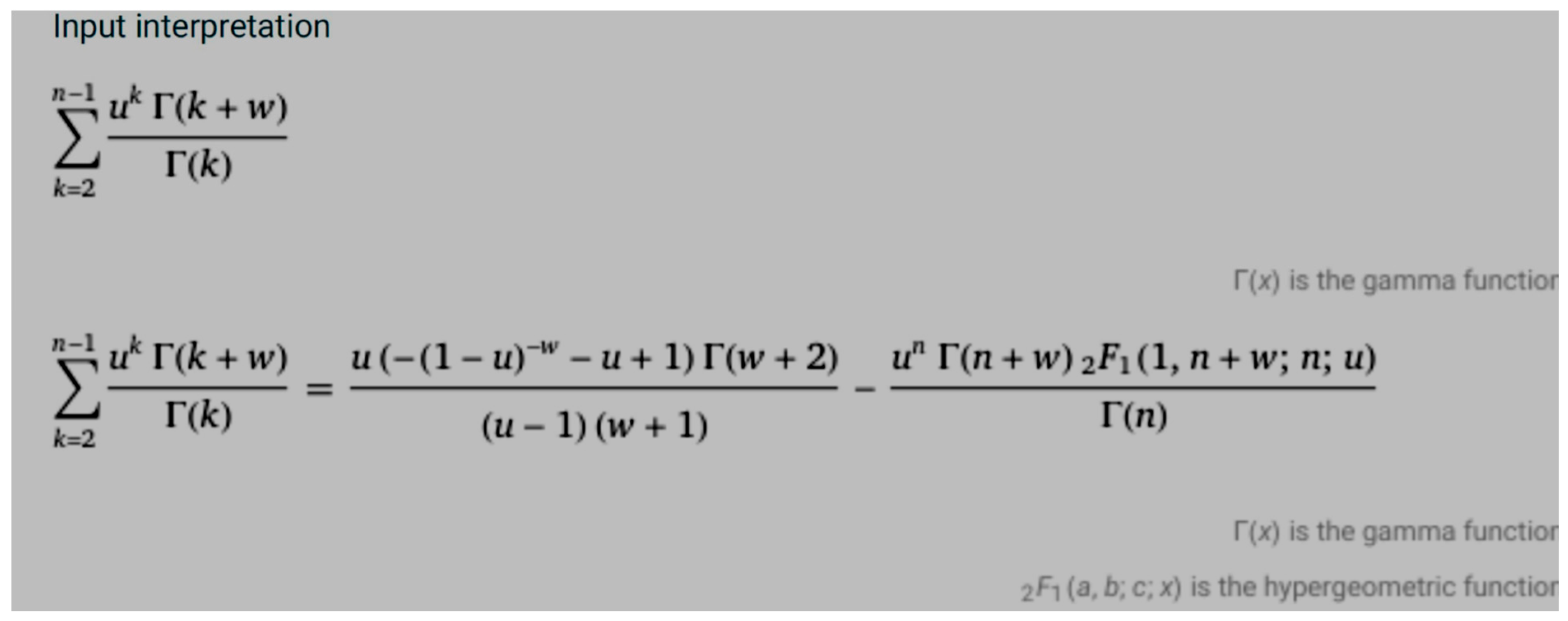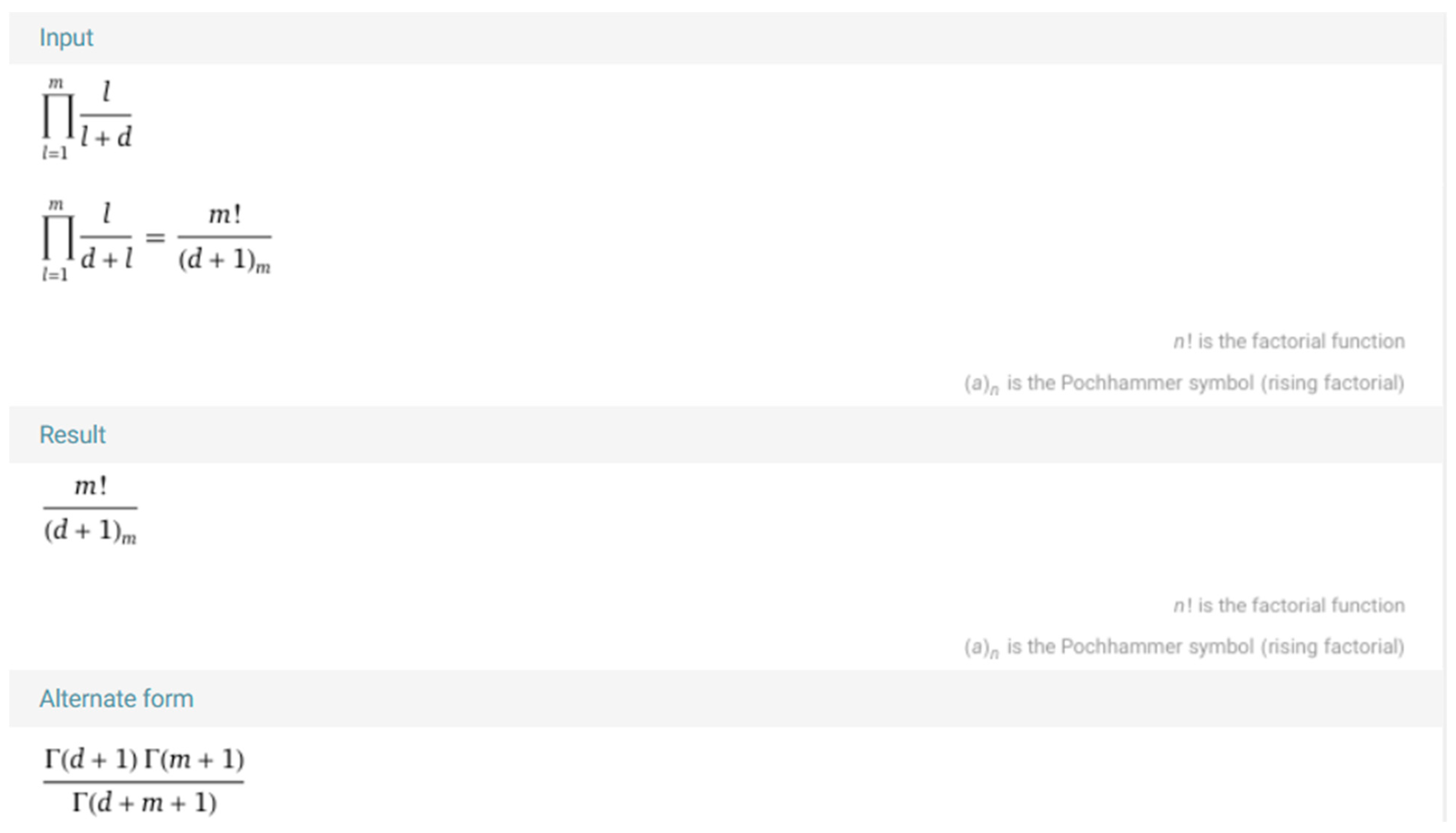On the Bifurcation Behavior of Decoupled Systems of Difference Equations
Abstract
:1. Introduction
2. Main Results
3. Conclusions
Author Contributions
Funding
Data Availability Statement
Conflicts of Interest
References
- Alhayal, M.A.A. A Study on the Solutions of Rational Difference Equations with Hypergeometric Functions. Master’s Thesis, Al-Albayt University, Mafraq, Jordan, 2017. [Google Scholar]
- Amodi, A. A Study of the Solution of Difference Equations Using Mathematica. Master’s Thesis, Al-Albayt University, Mafraq, Jordan, 2020. [Google Scholar]
- Intisar, M.; Khaled, B. A Study on Boundedness and Limits of the Solution of System of Difference Equations. Master’s Thesis, Al-Albayt University, Mafraq, Jordan, 2019. [Google Scholar]
- Ibrahim, F.D. A Study of the Solution for Systems of Difference Equations. Master’s Thesis, Al-Albayt University, Mafraq, Jordan, 2015. [Google Scholar]
- Yakoub, B. A Study on the Solution of Rational Systems of Difference Equations. Master’s Thesis, Al-Albayt University, Mafraq, Jordan, 2018. [Google Scholar]
- Al-Ashhab, S. On the Solution of the System of Rational Difference Equations . Gulf J. Math. 2014, 2, 106–117. [Google Scholar]
- Al-Ashhab, S. On the Limit of a Difference Equation with a Generating sequence. Palest. J. Math. 2022, 11, 13–27. [Google Scholar]
- Al-Ashhab, S. Omar Hasan, Rational systems of Difference Equations. Asian J. Math. Comput. Res. 2015, 5, 247–260. [Google Scholar]
- El-Metwally, H.; Elabbasy, E.M.; Elsayed, E.M. The Periodicity Character of a Difference Equation. Int. J. Nonlinear Sci. 2009, 8, 291–299. [Google Scholar]
- Kocic, V.L.; Ladas, G. Global Behavior of Nonlinear Difference Equations of Higher Order with Applications; Kluwer Academic Publishers: Dordrecht, The Netherlands, 1993. [Google Scholar]
- Asiri, A.; El-Dessoky, M.M.; Elsayed, E.M. Solution of a third order fractional system of difference equations. J. Comput. Anal. Appl. 2018, 24, 444–453. [Google Scholar]
- Karatas, R. Global behavior of a higher order difference equation. Inter. J. Contemp. Math. Sci. 2017, 12, 133–138. [Google Scholar] [CrossRef]
- Gumus, M.; Abo-Zeid, R.; Ocalan, O. Dynamical behavior of a third-order difference equation with arbitrary powers. Kyungpook Math. J. 2017, 57, 251–263. [Google Scholar]
- Elsayed, E.M. Dynamics and behavior of a higher order rational difference equation. J. Nonlinear Sci. App. 2016, 9, 1463–1474. [Google Scholar] [CrossRef]
- Elsayed, E.M.; El-Metwally, H. Global Behavior and periodicity of some difference equations. J. Comput. Anal. Appl 2015, 19, 298–309. [Google Scholar]
- Elsayed, E.M. New method to obtain periodic solutions of period two and three of a rational difference equation. Nonlinear Dyn. 2015, 79, 241–250. [Google Scholar] [CrossRef]
- Yazlik, Y.; Elsayed, E.M.; Taskara, N. On the behavior of the solutions of difference equation systems. J. Comput. Anal. Appl. 2014, 16, 932–941. [Google Scholar]
- Elsayed, E.M.; Ibrahim, T.F. Solutions and periodicity of a rational recursive sequences of order five. Bull. Malays. Math. Sci. Soc. 2015, 38, 95–112. [Google Scholar] [CrossRef]
- Elsayed, E.M.; Ibrahim, T.F. Periodicity and Solutions for Some Systems of Nonlinear Rational Difference Equations. Hacet. J. Math. Stat. 2015, 44, 1361–1390. [Google Scholar] [CrossRef]
- Rhova, D.; Viskotova, L. Some Applications of Linear Difference Equations in Finance with Wolframalpha and Maple. Ratio Math. 2014, 27, 81–90. [Google Scholar]


| n | x | y |
|---|---|---|
| 8 | 0.055555556 | 9.124 × 10−6 |
| 9 | 0.05 | 1.01378 × 10−6 |
| 10 | 0.045454545 | 1.01378 × 10−7 |
| 11 | 0.041666667 | 9.21616 × 10−9 |
| 12 | 0.038461538 | 7.68013 × 10−10 |
| 13 | 0.035714286 | 5.90779 × 10−11 |
| 14 | 0.033333333 | 4.21985 × 10−12 |
| 15 | 0.03125 | 2.81323 × 10−13 |
| 16 | 0.029411765 | 1.75827 × 10−14 |
| 17 | 0.027777778 | 1.03428 × 10−15 |
| 18 | 0.026315789 | 5.74599 × 10−17 |
| 19 | 0.025 | 3.0242 × 10−18 |
| n | x | y |
|---|---|---|
| 0 | 2.5 | 1 |
| 1 | 1.5 | 0.714285714 |
| 2 | 1.166667 | 0.517241379 |
| 3 | 1 | 0.376344086 |
| 4 | 0.9 | 0.2734375 |
| 5 | 0.833333 | 0.197492163 |
| 6 | 0.785714 | 0.141318977 |
| 7 | 0.75 | 0.099939431 |
| 8 | 0.722222 | 0.069728131 |
| 9 | 0.7 | 0.047944746 |
| 10 | 0.681818 | 0.032471535 |
| 11 | 0.666667 | 0.021660134 |
| 12 | 0.653846 | 0.014234541 |
| 13 | 0.642857 | 0.009221375 |
| 14 | 0.633333 | 0.005893092 |
| 15 | 0.625 | 0.003718414 |
| 16 | 0.617647 | 0.00231862 |
| 17 | 0.611111 | 0.001430041 |
| 18 | 0.605263 | 0.000873151 |
| 19 | 0.6 | 0.000528207 |
| 29 | 0.566667 | 2.38186 × 10−6 |
| 39 | 0.55 | 7.01505 × 10−9 |
| n | x | y |
|---|---|---|
| 6 | 4.714285714 | 0.803735435 |
| 7 | 4.5 | 0.791189817 |
| 8 | 4.333333333 | 0.780718786 |
| 9 | 4.2 | 0.77185174 |
| 10 | 4.090909091 | 0.764249764 |
| 11 | 4 | 0.757662488 |
| 12 | 3.923076923 | 0.751901055 |
| 13 | 3.857142857 | 0.746820424 |
| 14 | 3.8 | 0.74230743 |
| 15 | 3.75 | 0.738272531 |
| 16 | 3.705882353 | 0.734643979 |
| 17 | 3.666666667 | 0.731363631 |
| 18 | 3.631578947 | 0.728383883 |
| 19 | 3.6 | 0.725665394 |
Disclaimer/Publisher’s Note: The statements, opinions and data contained in all publications are solely those of the individual author(s) and contributor(s) and not of MDPI and/or the editor(s). MDPI and/or the editor(s) disclaim responsibility for any injury to people or property resulting from any ideas, methods, instructions or products referred to in the content. |
© 2025 by the authors. Licensee MDPI, Basel, Switzerland. This article is an open access article distributed under the terms and conditions of the Creative Commons Attribution (CC BY) license (https://creativecommons.org/licenses/by/4.0/).
Share and Cite
Al-Ashhab, S.; Alameer, A. On the Bifurcation Behavior of Decoupled Systems of Difference Equations. Axioms 2025, 14, 416. https://doi.org/10.3390/axioms14060416
Al-Ashhab S, Alameer A. On the Bifurcation Behavior of Decoupled Systems of Difference Equations. Axioms. 2025; 14(6):416. https://doi.org/10.3390/axioms14060416
Chicago/Turabian StyleAl-Ashhab, Saleem, and A. Alameer. 2025. "On the Bifurcation Behavior of Decoupled Systems of Difference Equations" Axioms 14, no. 6: 416. https://doi.org/10.3390/axioms14060416
APA StyleAl-Ashhab, S., & Alameer, A. (2025). On the Bifurcation Behavior of Decoupled Systems of Difference Equations. Axioms, 14(6), 416. https://doi.org/10.3390/axioms14060416






